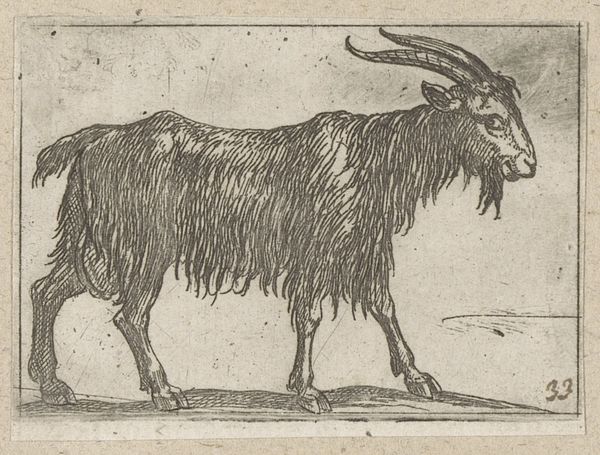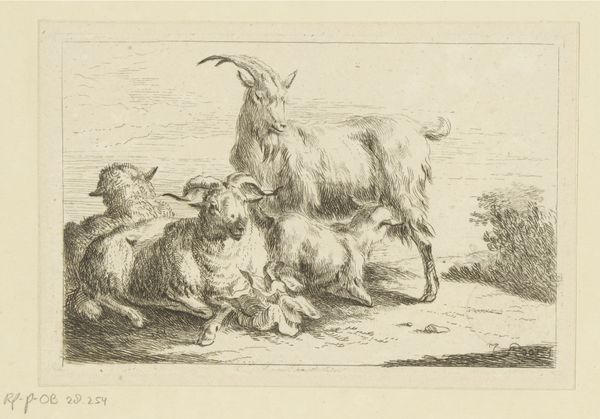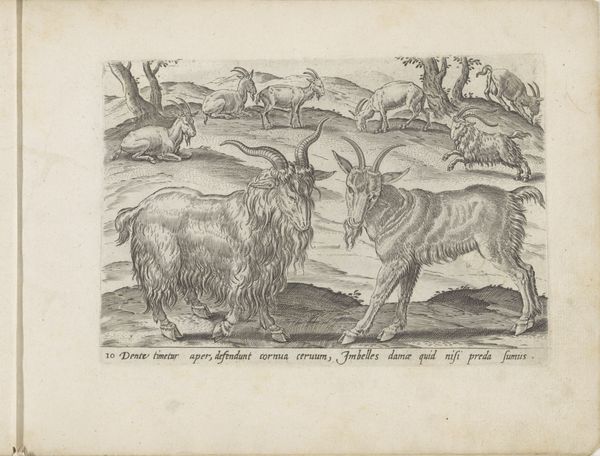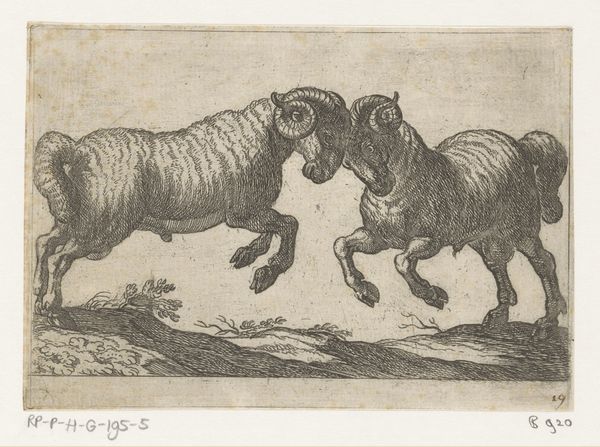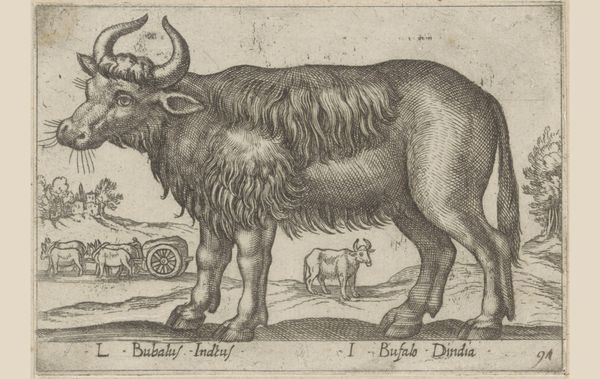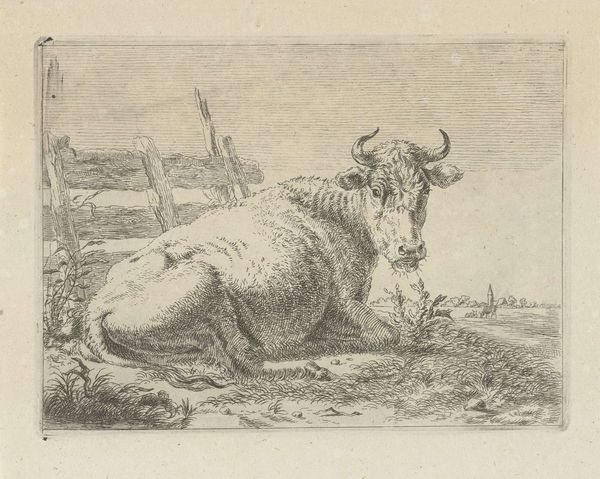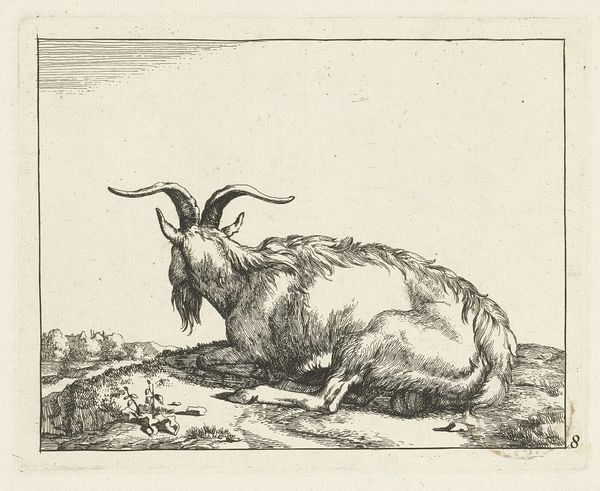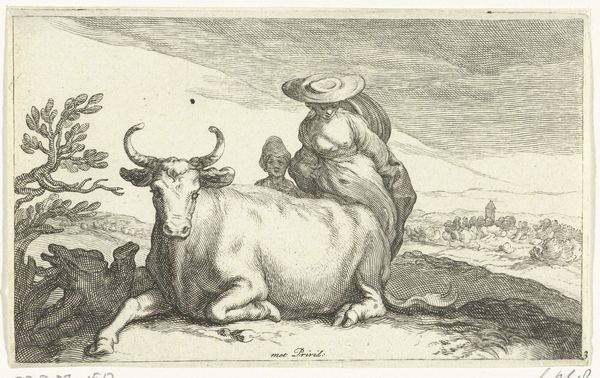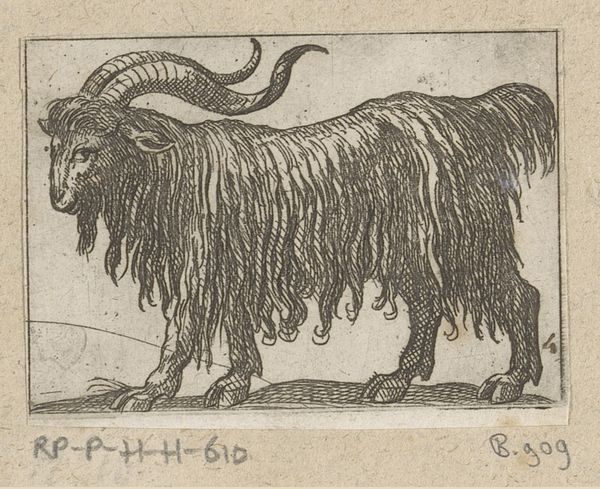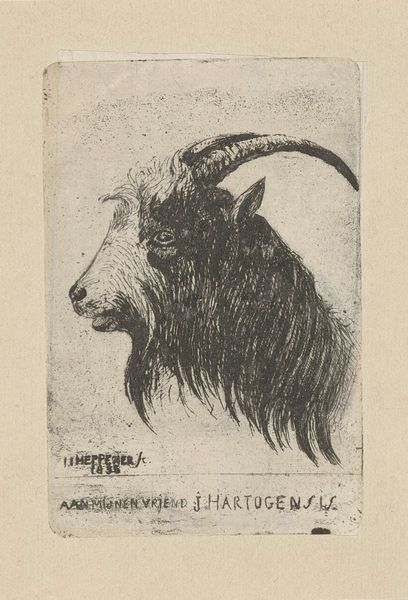
drawing, print, etching, engraving
#
portrait
#
drawing
#
baroque
#
animal
# print
#
etching
#
landscape
#
engraving
Dimensions: height 34 mm, width 98 mm
Copyright: Rijks Museum: Open Domain
Editor: This is “Rams, Sheep and Goats,” an etching by Christian Wilhelm Ernst Dietrich, dating back to 1744. It’s interesting how he grouped these animal heads together; they almost seem to be conversing. How would you interpret the composition of this print? Curator: Formally, it is essential to consider the disposition of the subjects across the pictorial field. Notice how Dietrich utilizes varied densities of hatching and cross-hatching to model the forms. The positioning of the heads also establishes a visual rhythm. What strikes you about the application of line and the rendering of texture? Editor: I see what you mean. The contrast is incredible, given it’s just an etching! There are soft, almost fuzzy areas next to sharp, defined lines, especially in the fur. Are there specific structural elements beyond the animal groupings that stand out? Curator: Observe the strategic placement of light and shadow. Dietrich manipulates the etching needle to create depth. The light source appears to originate from the upper left, casting subtle gradations across the animals' faces. It also helps draw the eye across the whole scene and link the animals as if in a shared field. Editor: So it's less about representing these animals realistically and more about the artistic tools used to create this world, so to speak. Curator: Precisely. It exemplifies an engagement with the formal properties of etching as a medium and less with external realities. Editor: I see that now. It’s not just a depiction, but a structured investigation of line and form. Curator: Exactly. Focusing on the compositional arrangement of forms, spatial relationships and play of light unveils Dietrich's intent. Editor: Thanks, I can better appreciate Dietrich's technique and this piece now!
Comments
No comments
Be the first to comment and join the conversation on the ultimate creative platform.

